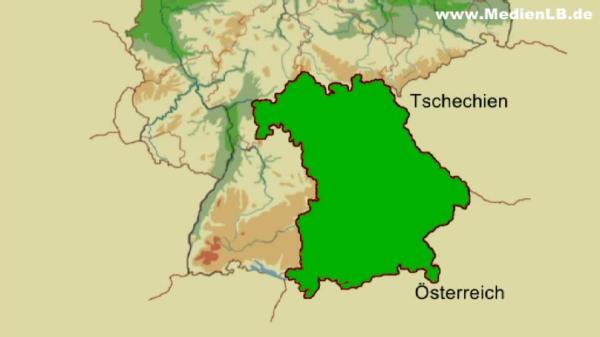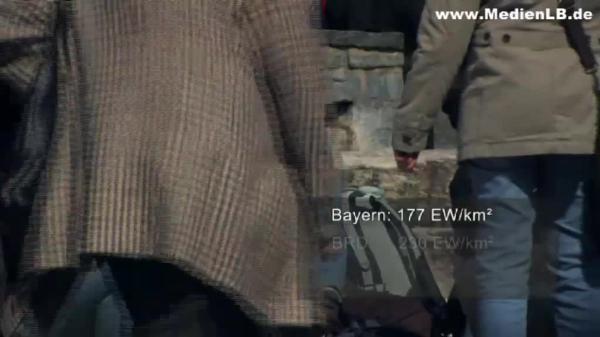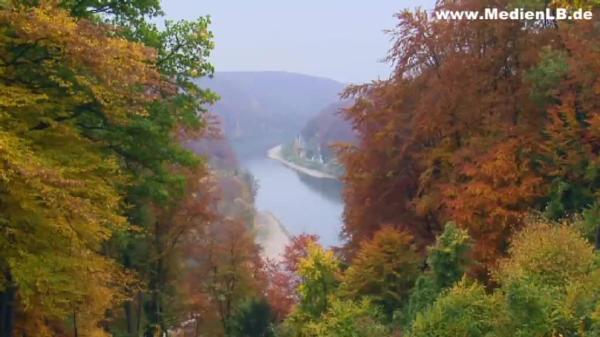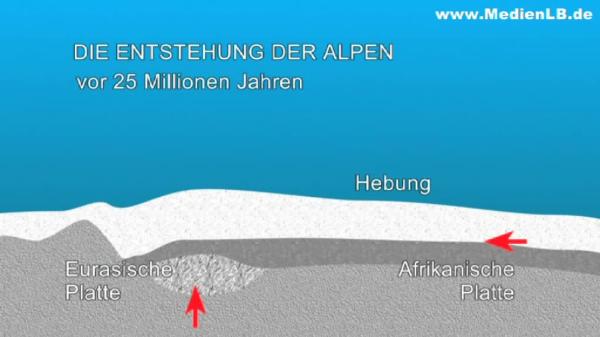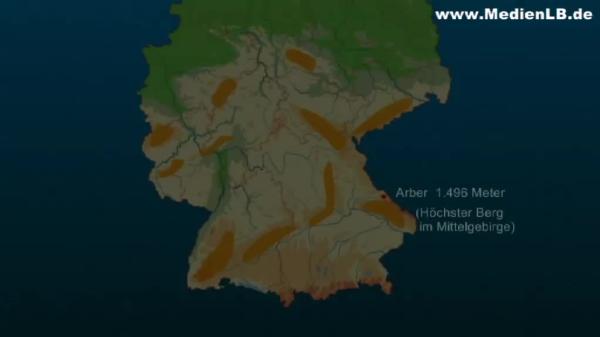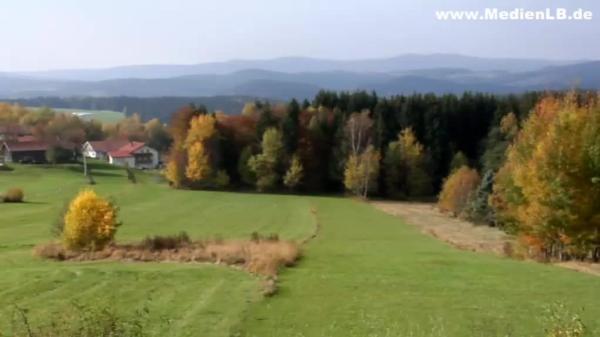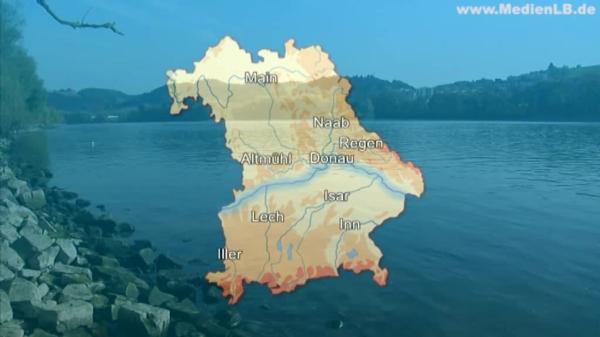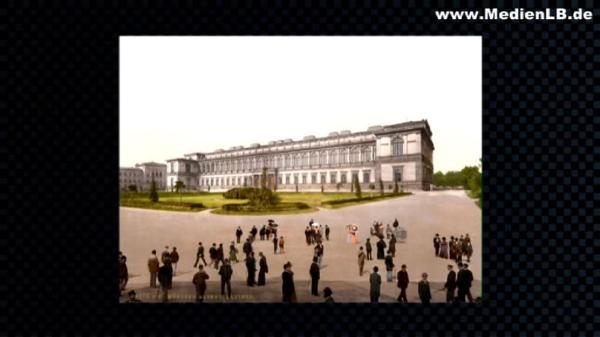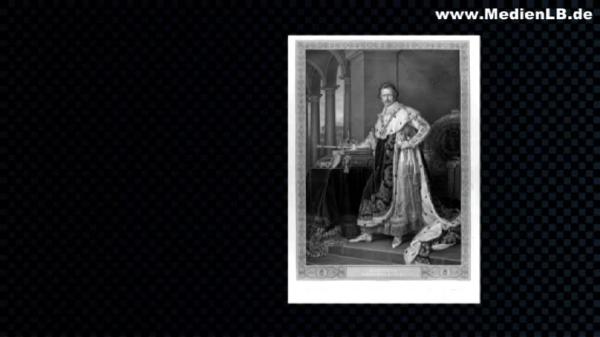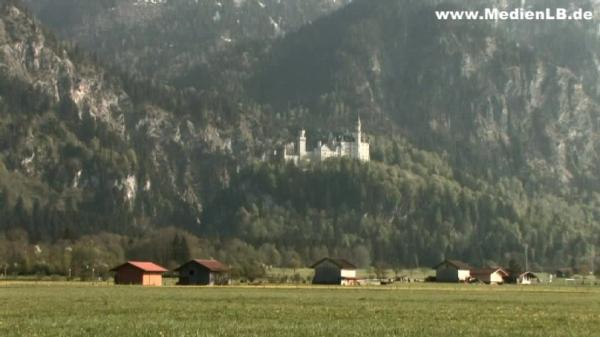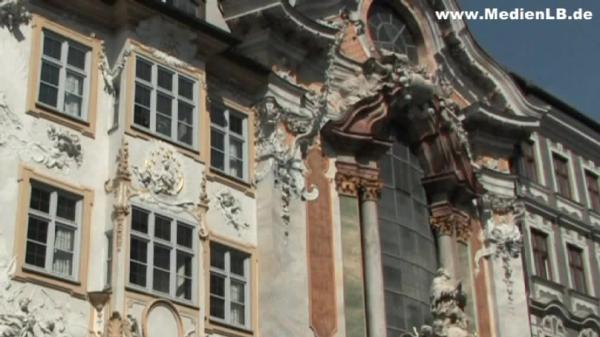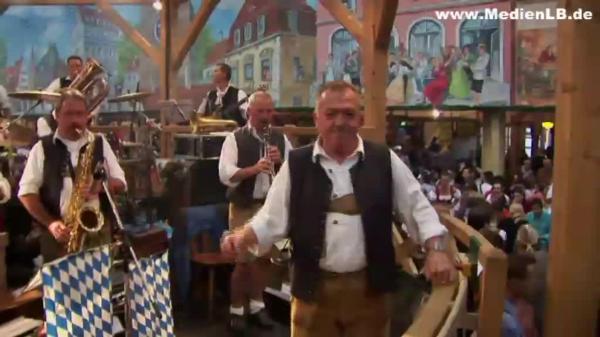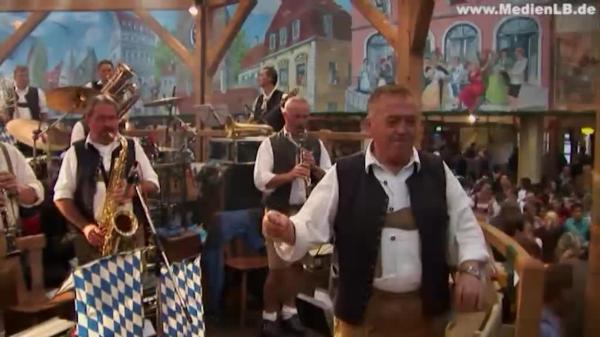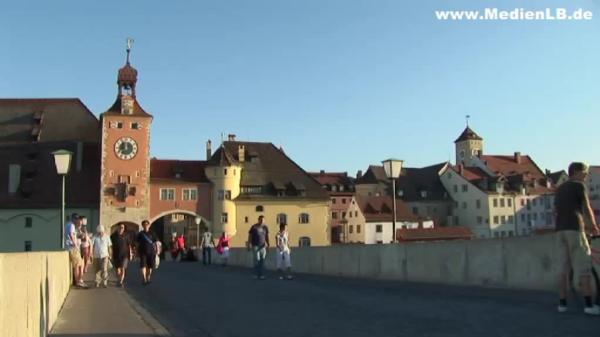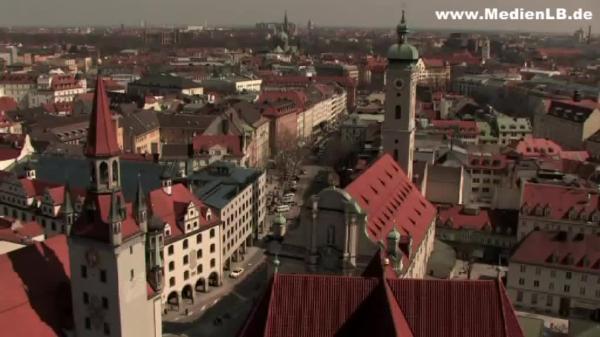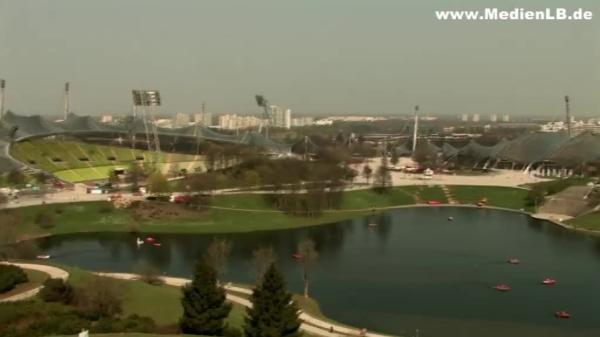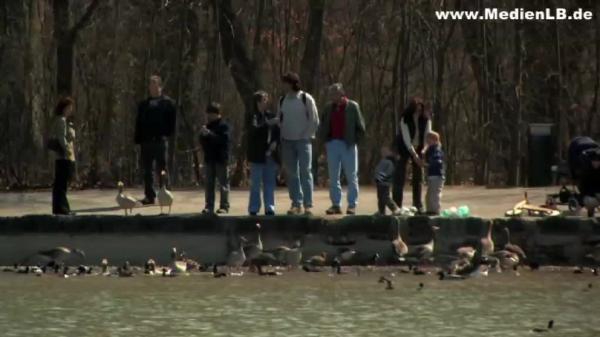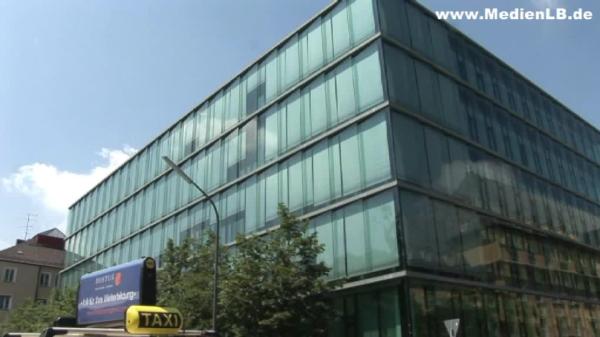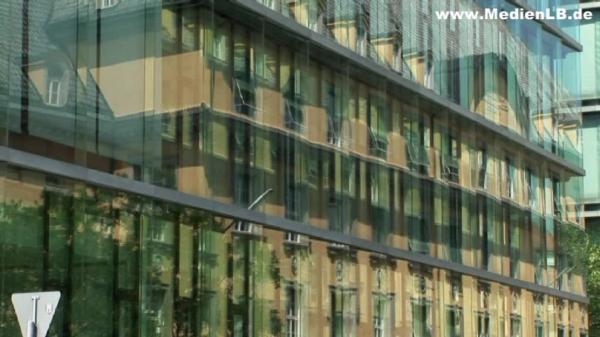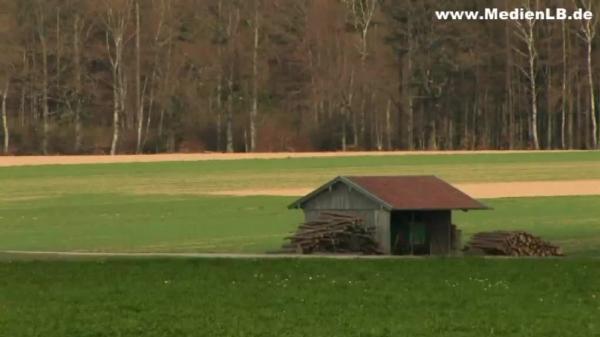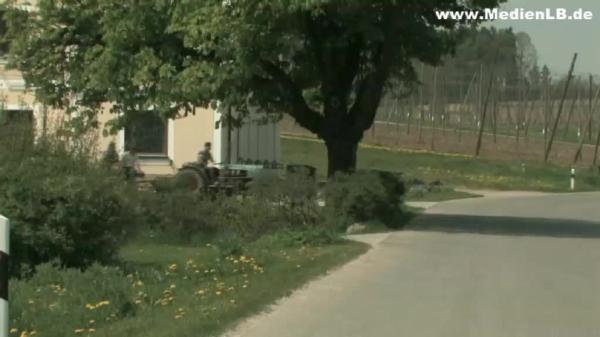Bayern
Die Bundesländer

Bavaria

1. Survey The Free State of Bavaria is the southernmost federal state of Germany. It is situated in the very centre of Europe. Bavaria has an area of 70`500 square kilometres and thus is the largest land of Germany. Bavaria borders on the Czech Republic, Austria and Switzerland for a short distance along the shore of Lake Constance. Adjoining federal states are Bade-Wurttemberg, Hesse, Thuringia and Saxony. The Free State is divided into 7 regions: Lower Franconia with its capital Wurzburg, Central Franconia with Ansbach as its capital, Upper Franconia with Bayreuth and the Upper Palatinate with Regensburg in the northern part of Bavaria and Swabia whose capital is Augsburg, Upper Bavaria with Munich and Lower Bavaria with Landshut in its southern part. Population The population of Bavaria comprehends all those inhabitants whose main place of residence is registered in Bavaria, this includes all male and female foreigners that are registered here, too. Bavaria has more than 12.5 million inhabitants. That means 177 inhabitants per square kilometre. The respective figure for the Federal Republic of Germany is 230, that of the European Union 116. Flag The great coat of arms of the Bavarian Free State shows six elements. The golden lion on a black field symbolizes the Upper Palatinate, the red and white three-pointed rake to its right represents the regions of Upper, Central and Lower Franconia. The blue panther on the lower left symbolizes Old Bavaria and the three black lions on the lower right represent Swabia. In the centre of the coat of arms there is the so-called heart shield with its blue and white diamond pattern typical of the Bavarian state as a whole. Above the escutcheon there is the last element, the so-called people`s crown which has symbolized the sovereignty of the people since the abolition of the monarchy. The great coat of arms is accompanied by two lions as shield bearers. The small coat of arms consists of the blue and white diamond pattern and the people`s crown. Bavaria has got two flags, the diamond flag and in addition the striped flag with a white stripe above and a blue stripe below. 2. Natural Landscapes Bavaria unites several spacious landscapes: the Bavarian Alps, the Alpine Foothills, the Eastern Bavarian low mountain ranges and the Swabian-Franconian escarpments. They all look different and have a different history of origin. The Alps and Alpine Foothills Parts of the Bavarian Alps are: the High Alps of the Allgäu, the Wetterstein, Karwendel and Berchtesgaden mountain massifs. The Alps originated about 30 to 35 million years ago. At that time the African tectonic plate collided with the Eurasian plate. Thus masses of rock were folded and pushed upwards and this process has continued until today. The mountains were shaped by the different kinds of erosion. Mountain ranges higher than 1500 metres are considered high mountains. That means there are enormous differences in altitude in a confined area. The peaks of the Bavarian Alps are on average 2000 metres high. Only the Zugspitze towers above them with its 2962 metres. Because of the differences in altitude the terrain is steeper here than in other landscapes. Deep gorges, narrow ridges and steep rock faces are its characteristics. The higher you climb in the mountains, the more the temperatures fall. The precipitations increase and the wind becomes stronger and stronger. In this special alpine climate plants grow more slowly. The vegetation has adjusted to the climate in great heights. Different species of plants grow in different heights. Up to 1300 metres there is mixed woodland, up to 1700 coniferous forest. If you climb higher, you pass through alpine meadows and mountain pines. At 1900 metres you pass the tree line. After that there are only rocks left. At about 2500 to 2800 metres you arrive at the permanent snowline. The peaks of the mountains are covered in snow and ice - the glaciated area. Rack railways and funiculars make the peaks accessible to anyone and open up vistas of the alpine chain. Thus the Alps are an attractive recreation area and one of the most frequented tourist destinations in the world. 100 million people enjoy a day or weekend trip every year, 50 million spend a longer holiday in the valleys and on the slopes. Nearly every mountain area has been opened up with the help of ski runs and footpaths. The different villages have offers especially for sportsmen and spa patients. Wintersports such as skiing and snowboarding are the favourites. However, the mountains are no adventure playground. Valleys that were secluded and deserted are flooded by mass tourism today. Because of the enormous need of space for building lifts, roads, carparks, mountain huts, restaurants, hotels and shops the mountain forests die. Hikers and skiers damage the vegetation so that rain water rushes down unstoppably into the valleys. The forest is the most effective protection against avalanches and erosion. The mountain dwellers joke:" In former times it was said `The mountain calls`, today we say `The mountain comes`." The glaciers today are considerably smaller than the colossal torrents of ice that filled the alpine valleys during the Ice Age and penetrated far into the foothills. Doing this the glaciers ground out so-called tongue basins which were filled with meltwater and formed into lakes. The Chiemsee is one of those lakes. Towards the north and along its sides moraines mark its boundaries. Moraines are scree from the mountains that was deposited during the Ice Age and can be seen as chains of hills in the landscape today. They show how far the ice masses advanced during the Ice Ages. The Chiemsee is the biggest lake that is situated completely in Bavaria. It is about 60 kilometres to the southeast of Munich. There are three islands in the lake: the Herreninsel, the Fraueninsel and the Krautinsel. Just like the Chiemsee also other tongue basin lakes like the Starnberg Lake or the Ammersee are ideal for sailing, swimming, hiking and cycling. A special attraction of the Chiemsee is the Herrenchiemsee new palace, which was built by Ludwig II. Standing on the top of a terminal moraine looking to the north you will see a totally different landscape. The countryside is uniformly flat. The subsoil is covered with scree. These so-called sander were deposited by the meltwater which rushed down the moraines during the Ice Age spreading the scree before them. Munich is situated on such a gravel field. Low Mountain Ranges and Escarpments North of the flat alpine forelands and north of the Danube there are the low mountain ranges. They reach as far as the north German lowlands. With 400 kilometres extension from north to south they are the largest and oldest natural landscape of the German regions. They have their highest peak with 1496 metres at the Arber in the Bavarian Forest. Their long and varied history can be seen in their many different forms. Here, in the Rhoen, one can see former volcanoes, long mountain ridges covered with forests and wide slopes and valleys with numerous villages right in the middle of the mountains. The low mountain ranges are more easily accessible than the Alps. However, you notice the altitude through the harsh climate, which makes them rather unattractive for intensive agriculture, because the ground is stony and low in nutrients. In a number of places mineral resources are found such as silver or quarzt, which is manufactured into glass. But most mineral resources have already been exhausted.Today the local population earns more from tourists who visit the mines. Between the Forest of the Upper Palatinate in the east and the Upper Rhine in the west there is the escarpment landscape. The escarpments consist of alternating layers of rock of different degrees of hardness. Through different speeds of erosion stairs are formed the single steps of which can go up more than 100 metres. National Park The Bavarian Forest National Park was opened in 1970 as the first national park in Germany. On the rather barren ground of granite and gneiss people were not successful with forestry and agriculture or granite cutting and quartz mining. The founding of the national park was meant to give the economically weak region an upturn through tourism. Today, however, the aim of the park has changed. The role of tourism is only secondary. Priority is given to its regeneration into a primeval forest. Thus Bavaria protects a unique forest and low mountain range landscape along the border to the Czech Republic. The national park reaches across this border. The Czech have declared the adjoining area a national park, too, and named it Sumava. So the woodland area offers habitats for rare animals such as the lynx, which though wiped out in the Bavarian Forest in 1846, has reappeared in the area, presumably immigrated from the Bohemian Forest. Some animals were clandestinely released into the wild between 1970 and 1974, but this led to tensions among hunters, farmers and environmentalists. Only limited areas of the park may be exploited for tourism under strict regulations. Consequently only few hiking trails, which mustn`t be left, go through the dense forest. Because of these conditions the national park offers ideal opportunities to explore natural processes of the environment and to gain knowledge about nature and a peaceful coexistence of man and nature is guaranteed. The Danube The Main and the Danube are with their more than 400 kilometres the longest rivers in Germany. Well-known rivers like the Iller, the Lech, the Altmuehl, the Naab, the Regen, the Isar and the Inn are tributaries of the Danube. The Danube is after the Wolga the second lpngest river in Europe with its altogether 2840 kilometres. It rises in the Black Forest. In Ulm it enters Bavaria, flows through Ingolstadt and then arrives at the resurgence of the Danube between the monastery of Weltenburg and Kehlheim. This landscape has received the European diploma for natural beauty. From here on the Danube is a navigable river. After the Rhine-Main-Canal the Danube is an international waterway with a width of 100 metres. After Regensburg it flows through the fertile Gaeuboden towards Passau, the border town to Austria. 3. History Ludwig I and Ludwig II During the reign of Ludwig I in the middle of the 19th century Munich, Bavaria`s capital, becomes a centre of German commerce and industry as well as culture. Poets, painters, architects and scientists from all over Germany are summoned to the metropolis. Very soon the new zeitgeist finds its expression in art and literature. The Revolution of March 1848 with the realization of demands such as responsibility of ministers,freedom of the press and electoral reforms force Ludwig I to abdicate. His son Maximilian II continues his father`s work as patron of the arts. Moreover, he introduces decisive socio-political reforms and actively supports the sciences. Maximilian`s successor, Ludwig II, has been known as the Fairy-taleKing until today. He came to power in the second half of the 19th century. But soon the king retires from politics. He devotes himself to building his castles and to the music of Richard Wagner, which both fascinated and enraptured him already at the age of 16. Ludwig II and his castles Ludwig II has the world-famous fairy-tale castles of Neuschwanstein, the Herrechiemsee and Linderhof built. But this causes considerable deficits in his private cabinet coffers, so that the castles can`t be completed. When seeing Neuschwanstein for the first time people feel carried off into a fairy-tale world. Neuschwanstein is perched high up on a steep rock and consists of innumerable pointed turrets. That`s exactly how King Ludwig, the Fairy-tale King, wanted his castle. In 1869 construction on the castle started. It lasted more than 20 years all in all and swallowed a vast amount of resources. Today Neuschwanstein is one of the best-known palatial complexes in Europe and is visited by more than a million tourists every year. On 9th June 1886 Ludwig is declared `deranged` and `ìncurable` and is certified by the government. Shortly after he drowns in mysterious circumstances in the Starnberg Lake. On its eastern shore a cross recalls the Fairy-tale King. The most important kings of Bavaria were Ludwig I and Ludwig II. After the First World War the monarchy is abolished in November 1918. National Socialism From the very beginning right-wing extremist groups fought against the new republic. On 9th November 1923 Hitler tries a first putsch with his March on the Feldherrnhalle, which can be quelled by the Bavarian police. But National Socialism can`t be decisively weakened. After Hitler seizes power on 30th January 1933 Bavaria as well as the other laender is `brought into line` and loses its sovereignty. Also in 1933 the first concentration camp is set up in Dachau near Munich. The Jewish population and every political adversary are persecuted mercilessly. Bavaria is made the centre of National Socialism. Hitler declares Munich the `Capital of the Movement`, Nuremberg becomes the `City of the Rallies`. But there are also signs of resistance. An outstanding example is the circle of the White Rose at the famous Ludwig-Maximilians-University in Munich around the students Hans and Sophie Scholl, Christoph Probst, Alexander Schmorell and professor Kurt Huber. With dangerous actions like the distribution of leaflets they try to inform and educate, for which they are eventually guillotined. During the Second World War Bavarian cities like Munich, Nuremberg and Würzburg are bombarded heavily. After the end of the war Bavaria is part of the American occupation zone. The following decades are shaped by the reconstruction of cities and a democratic reorganization. On 1st December 1946 the constitution of the Bavarian Free State is accepted with an overwhelming majority of the Bavarian people. Churches an Monasteries Besides its natural beauty and its castles Bavaria has numerous churches and monasteries. But it should be realized that religiously Bavaria is a divided country. In many Swabian and Franconian areas and free cities the Reformation prevailed. Old Bavaria, however, remained loyal to the Roman Catholic Church. In the 16th century the country becomes a centre of the Counter Reformation. Many churches have been preserved throughout the centuries. The Catholic predominance also allowed a display of splendour in the churches. The Wieskirche in Steingaden, for example, is a magnificent rococo building and was designated a World Heritage Site by the UNESCO, the cultural organisation of the United Nations, some years ago and thus is a precious showpiece of the Catholic Church. Landscapes and cultures of the regions have been especially shaped by their monasteries. Sites like Herenchiemsee or Moenchsdeggingen, village lands like the Prior`s Garden or Monastery Copse, names like Barfuesser Street or Carmelite Lane remind us of the old monasteries. Monasteries represented learning and culture. That`s why often towns were built near them, and until today they have attracted visitors and display their treasures, like here in the monastery of Weltenburg on the Danube, where beauty of nature and of art meet in the very centre of Bavaria. But the recurrent dangers of floods and inundations make us clearly aware of the hazards and of our responsibility for the country. Customs The preservation of regional customs and traditions has always had top priority in Bavaria. Folk song, folk dance and folk music are still very much alive in many Bavarian towns and communities. Societies for the promotion of traditional costumes, folk dance groups and bands continue the traditions. So it is not unusual to wear traditional Bavarian costumes for special events. Sometimes they can even be found as everyday wear, though in a less conspicuous form. In the cityscape, however, they are seen less often. Except in Bavarian pubs. Here the staff often wear costume. During the Munich Beer Festival it`s costume time, of course. Then young and old show off their lederhosen and colourful dirndls with apron and blouse. 4. Munich Structure, History and Monuments Bavaria`s capital is Munich. It is situated at a longitude of 11°34'60" east and its latitude is 48°8'60" north. Up to the 13th century Regensburg was the Bavarian capital. Later it was transferred to Munich. With about 1.3 million inhabitants Munich is the third biggest city of Germany today after Berlin and Hamburg. It has the highest population density of all German cities. Other important Bavarian cities are Nuremberg, Wuerzburg and Passau. Looking at the Munich skyline you realize that there are only few skyscrapers, which in addition are situated outside the city centre. During recent years Munich has developed into the second most important financial centre after Frankfort, so that there are many banking houses and insurance companies. Money played an important role at the foundation of Munich: in 1158 Henry the Lion had a bridge built across the Isar. He chose a site on the river where monks lived, to collect toll from those who crossed over. That was when Munich was born. To improve its defence Munich was fortified with a city wall. Today there are only the mediaeval town gates left: the Sendlinger Tor and the Karlstor, which was rebuilt for the last time in the 19th century. Karlsplatz and Karlstor got their names from the electoral prince Karl Theodor. But among the inhabitants the name of 'Stachus' has become established. From the Stachus the Kaufingerstraße, a 300-metre shopping centre, leads to the Marienplatz, which is the city centre. This centre is only sparsely inhabited but densely populated during the day. It is almost exclusively reserved for business and administration buildings. Next to the City Hall on the Marienplatz there are banks, cafés, hotels, restaurants and churches, for example the Frauenkirche. Its imperial roofs are famous symbols of the city. As Munich hasn't got many high buildings the almost 100-metre high steeples can be seen from far away. The Maximilian Street in the very centre of the city is one of the most exclusive and expensive shopping streets. Here many well-known fashion designers, for example Dior, Versace or Chanel, have set up shop. These shops are much frequented, because there are many luxury hotels around the Maximilian Street, such as the 'Vier Jahreszeiten'. An imposing monument, visible from far away, is the Siegestor. Since its destruction in the Second World War and reconstruction afterwards, it has been a memorial for peace. Around the turn of the 20th century Schwabing experienced a heyday as a Bohemian quarter. Many eminent literary figures and contemporary painters who made history lived and mixed there. The Leopold Street in Schwabing is a wonderful ambience for strolling and shopping. In several side streets there are small but fine boutiques and cafés. The most important museums of Munich are the three great picture galeries: the Old Pinakothek, the New Pinakothek and since September 2002 the Galery of Modern Art and, of course, the German Museum for Technology. Olympic Park and Stadium Every city needs its recreation areas. Not only parks and woods and playgrounds are necessary, such as the English Garden or the Olympic Park, which was built for the 20th Summer Olympics in Munich in 1972. On this occasion the Olympic Park with its 3 square kilometres was laid out, the striking pyramid roof was put up, three sports complexes were roofed: the Olympic Hall, the Olympic swimming-pool and the Olympic stadium. Next to them the Olympic tower rises into the Munich sky with its height of almost 300 metres. Also the local public transport system was developed with underground and suburban rail network, which meanwhile reaches far into the surrounding countryside. The inner city was transformed into a pedestrian precinct at the time. Unfortunately the sports events were overshadowed by an attack of Palestinian terrorists on the Olympic athletes from Israel. In the year 2005 a new stadium was built for the Football World Championship in 2006 - the Allianz Arena. It is considered the most modern football arena in Germany. Depending upon whether the FC Bayern Munich or the TSV 1860 Munich are playing, the building is illuminated by red or blue lights. At the same time the stadium marks the city boundary as an entrance gate to a city that wants to be modern and attractive. The English Garden Encompassing about 4 square kilometres the English Garden in Munich is the biggest city park in the world. Roughly following the course of the Isar it forms a green ribbon with the adjoining riverside landscape that runs through the city from south to north and offers the biggest recreation area in town. It was already opened officially more than 200 years ago as a people's park. It was laid out following an initiative of the American Thompson who, in spite of his position as Bavarian Minister of War, showed a strong social commitment. Typical sights of the English Garden are the Monopteros, a classical pavilion, the Japanese Tea house and the Chinese Tower. The latter two are presents from the Emperor of Japan. The Chinese Tower with its beer garden as well as the Seehaus are very popular destinations for outings on sunny days. With pretzels, beer and brass band music you can enjoy Bavarian beer-garden culture under chestnut trees. With these features Munich attracts nearly 4 million tourists a year as the ' World City with a Heart'. 5. Economy Industry and Services Bavaria is considered an economically very strong and rich federal state. After the Second World War it developed from an agrarian into a technological country. The Bavarian economic policy has used its oppoitunities successfully. For decades Bavaria has been leading in economic growth in Germany. Consequently the economic power per inhabitant is one of the highest in the world. Together with Baden-Württemberg the Free State has shown the most positive balance sheets on the labour market for years, which means the lowest unemployment rates and the most dynamic job market of all German laender. The number of selfj-employed people in Bavaria is above averyge. Almost every other euro in Bavarian industry is meanwhile earned on the world market. Considering its gross domestic product Bavaria spends more than average on research and development. Not least its share of investments in total national spending is higher than in all other states, in spite of by far the lowest per capita indebtedness of all Germany. Commercial and industrial areas are mostly situated on the outskirts of a town as they need plenty of space. Housebuilding follows this trend as many employees prefer living close to their workplace. Moreover, rents are mostly far cheaper on the outskirts than in the town centre. As a consequence the city encroaches on the surrounding countryside which is called suburbanization, derived from the English word 'suburb'. To guarantee a trouble-free delivery and collection. especially in industrial areas, the suburbs are well-linked to the traffic network. Today the industrial area of Munich is characterized by the latest technology and the media. After the Second World War Munich developed into a high-tech centre. The city kept growing. Towards the end of the 50s the number of inhabitants goes beyond the one million mark for the first time. A lot of companies of the tertiary sector, that is the service industry, have been established, for example media aned insurance companies. The European Patent Office has its headquarters in Munich, too. But today also more than 8oo high-tech companies representing the optical industry, electrical engineering, the car industry, mechanical engineering, microelectronics and information technology have their seats in Munich. In addition Munich is an important media city with many companies dealing in telecommunications, newspaper and book publishers, broadcasting centres for radio and television programmes, more than 400 companies working on film productions and, of course, the Bavarian Film Studios. Agriculture The Bavarians produce almost all food a man needs for life themselves. Agriculture in the Free State is as varied as its natural landscapes. Good soil favours arable farming and the cultivation of special crops, grassland is suitable for keeping livestock and the forest growing on soil that is low in nutrients produces wood, stores water and offers living space and recreation areas for man and animal. Farmers have intensified agriculture and stock-breeding. The amount produced by 80 farmers in former times is produced by only three today. Farmwork has been largely mechanized. So village life has changed considerably. Meanwhile more people live there who have nothing to do with agriculture any more, but work in factories, offices or shops. Young families, too, have settled there, because countrylife is much cheaper. In the south-east of Bavaria, between Regensburg and Vilshofen along the Danube, there is the Gaeuboden or Dungau. There the farmers have specialized in 3-year crop rotation. This means every three years another crop is cultivated, so that the soil can recover and the harvest of each crop remains constant. In the Allgaeu foothills pastural agriculture predominates. About 300000 cows produce more than one billion litres of milk a year. The local cheese dairies produce a quarter of the total amount of cheese in Germany.. Emmental and Bergkaese are well-known all over the world. Special crops Special crops only grow on particularly fertile soil like the chalky loess which stores warmth especially well. Special crops are useful plants that are cultivated with a high amount of labour and attention on small patches of land. Special crops typical of Bavaria are the grapevine in Franconia, market gardening around Nuremberg and the hop in the Hallertau. The cultivation is limited to small farms. Their products must be sold, or processed quickly, because they are extremely perishable. As this isn't always assured, the producers run high risks. They are organized in cooperatives to limit these risks for each farm. Moreover, as a group you are always stronger, after all, with separate small areas of cultivation no amount can be produced that guarantees economic survival in the long run. Quality, however, is an important factor for many farmers besides quantity. Therefore the Hallertau hop is at the top of the world market because of its excellent quality and supplies one third of the world production of hop. Hop is an important component in beer-brewing. It is responsible for the aroma and makes the beer keep longer. The special attraction of the federal state of Bavaria lies in its diversity. This doesn't apply only to its wonderful landscapes and the preservation of active traditions, but also to its openness to cultural trends of all kinds, either in art or in technology. Thus Bavaria demonstrates that the linking of tradition and the Modern Age is not only feasible, but can be even part of the identity of a European region.


